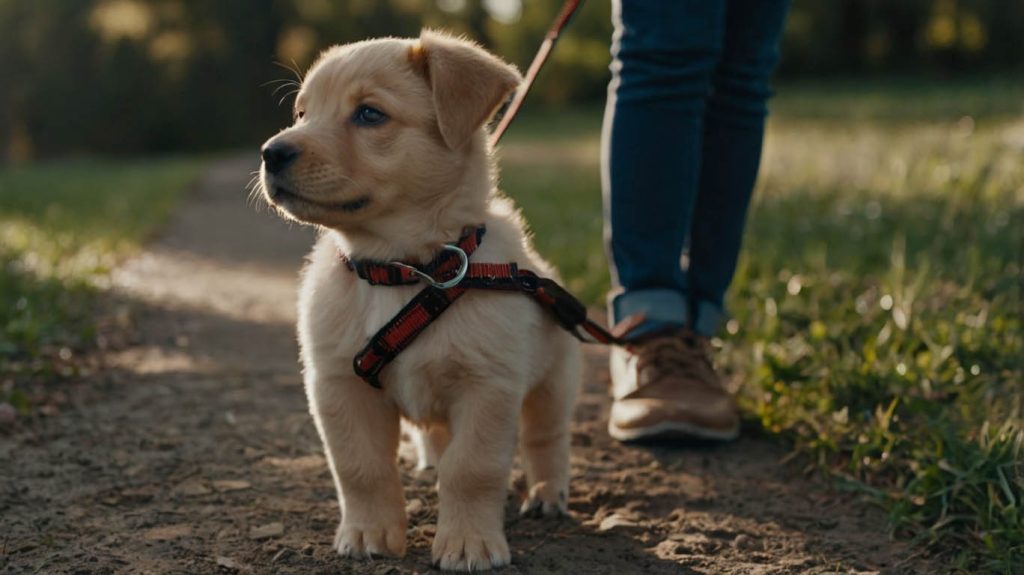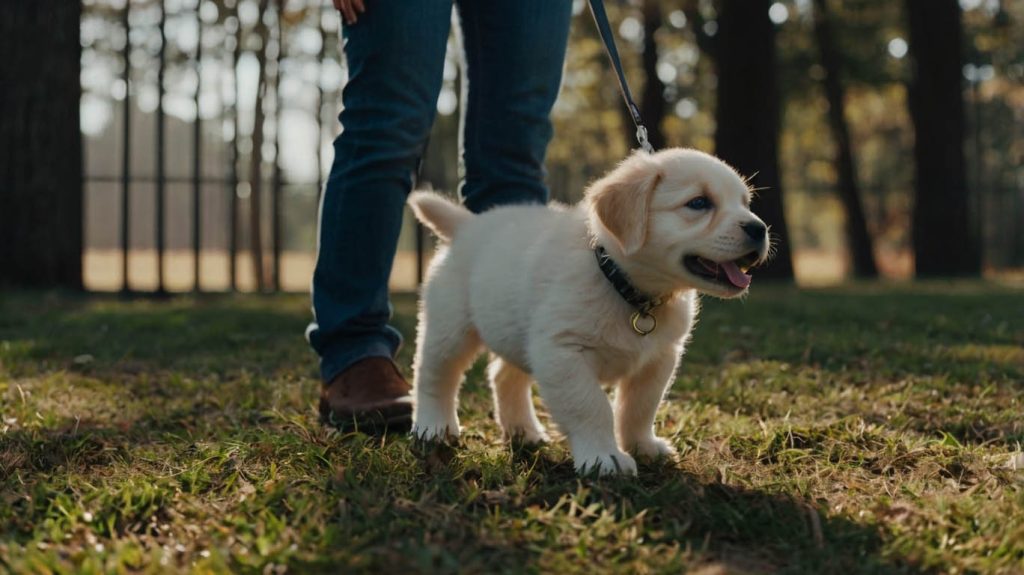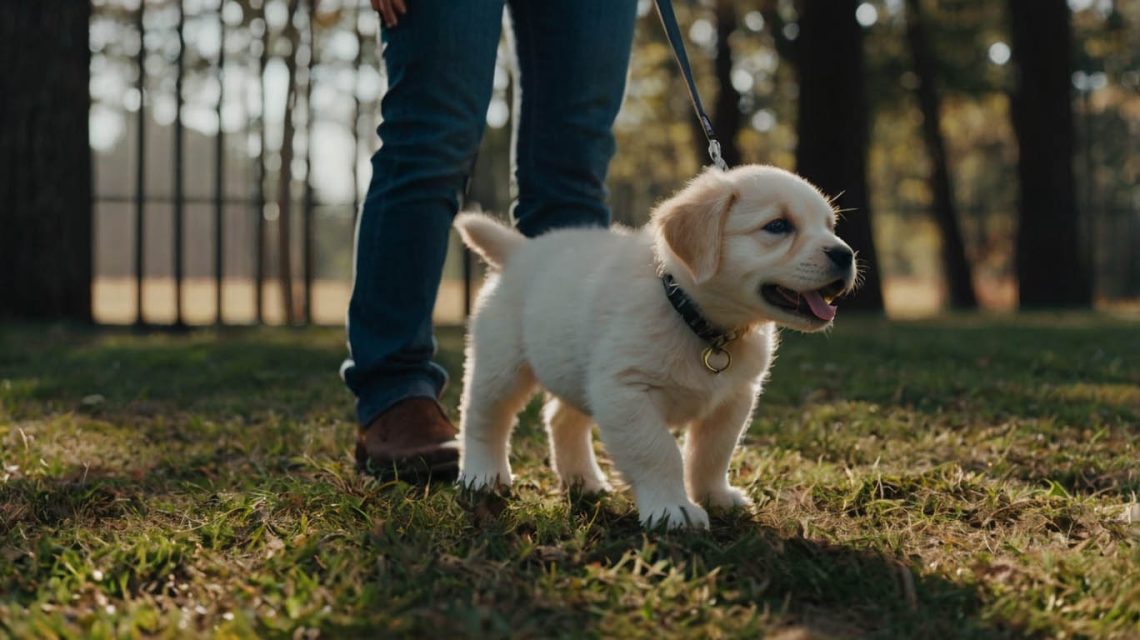When to Start Leash Training a Puppy: The Ultimate Guide to Peaceful Walks
You picture it perfectly in your mind: a sunny afternoon, a gentle breeze, and you strolling peacefully through the park with your adorable new puppy trotting happily by your side. It’s the dream that inspires so many of us to get a dog. But then, you bring your puppy home, attach a leash for the first time, and that dream collides with a stark reality. Your puppy might plant their feet and refuse to move, buck like a tiny bronco, or bite and alligator-roll with the leash itself. Consequently, the idyllic vision is replaced by a single, urgent question: when to start leash training a puppy so we can actually enjoy our walks?
Many new owners believe they should wait until their puppy is older and stronger before tackling the leash. This is a common and costly mistake. The truth is, the foundation for a lifetime of pleasant, pull-free walks is built in the very first weeks you have your puppy. Therefore, this guide will provide the definitive timeline and step-by-step process to transform the leash from a scary monster into your puppy’s best friend.
The Surprising Answer to When to Start Leash Training a Puppy
Let’s resolve the most important question right now. The absolute best time to start introducing the concepts of leash training is the day you bring your puppy home, which is typically around 8 weeks of age.
This does not mean you should clip on a leash and head out for a mile-long hike. At this tender age, “leash training” is not about heeling or structured walks. Instead, it’s about one simple, crucial goal: creating a positive association with the equipment (the collar/harness and the leash). You are teaching your puppy that these items predict wonderful things like treats, praise, and fun. By starting now, you prevent the fear, anxiety, and resistance that often develop when a leash is introduced to an older, unprepared dog. The answer to when to start leash training a puppy is always about starting the introduction as early as possible.

Why Knowing When to Start Leash Training a Puppy is So Critical
Starting early aligns perfectly with your puppy’s key developmental stages. Between 3 and 16 weeks of age, your puppy is in their critical socialization period. Their brains are like little sponges, wired to accept new things. Introducing a collar, harness, and leash during this time teaches them that these are just normal, non-threatening parts of life.
Waiting until a puppy is 4, 5, or 6 months old to put on a collar for the first time can be a genuinely scary experience for them. They are more aware, potentially more set in their ways, and may see this new restraint as something to fight against. This fight can create a negative feedback loop that leads to pulling and reactivity down the road. This is precisely why the discussion of when to start leash training a puppy is so focused on these early, formative weeks.
Your Step-by-Step Guide to Leash Training a Puppy from Day One
Think of this process in small, positive phases. Each phase builds on the last. Your mantra should be: “patience and positivity.”
Phase 1: Getting Comfortable Before You Start Leash Training a Puppy (Week 8)
The goal of this phase is simply to get your puppy used to wearing a collar or harness.
- Choose the Right Gear: For a young puppy, a lightweight, comfortable harness is often a better choice than a collar. A harness distributes pressure across their chest instead of their delicate neck, which is safer and discourages pulling from the start.
- Introduce it with Treats: Show your puppy the harness. Let them sniff it. Give them a treat. Touch them with the harness. Give them a treat.
- Short and Sweet Sessions: Put the harness on for just a minute or two. While they are wearing it, distract them with a fun game, a few high-value treats, or their meal.
- Take it Off Before They Fuss: Remove the harness before they start to scratch at it or seem annoyed. You want every experience to be positive. Repeat these short sessions several times a day.
Phase 2: Introducing the Leash Itself (Indoors, Week 8-9)
Once your puppy comfortably wears their harness, it’s time to introduce the leash.
- Let it Drag: In a safe, puppy-proofed room, clip on a lightweight leash and simply let your puppy drag it around for a few minutes. Supervise them closely to ensure it doesn’t get caught on anything.
- Make it a Game: While the leash is dragging, play with your puppy. Toss a toy. Give them treats. You want them to learn that the leash’s presence is a normal part of fun. The leash should be so boring and incidental that they barely notice it. This is a vital step for anyone wanting to know when to start leash training a puppy correctly.
Phase 3: Teaching Your Puppy to Yield to Leash Pressure (Indoors, Week 9-10)
This is the most important skill you will teach. Instead of pulling against your puppy, you will teach them that moving with the pressure makes good things happen.
- Hold the Leash: Pick up the end of the leash. Let your puppy wander away from you.
- Apply Gentle, Steady Pressure: When they reach the end of the leash, hold it still. Do not yank or pull. Just apply gentle, steady tension.
- Lure Them Back: Your puppy will likely feel the pressure and stop. The moment they do, use a happy voice and a tasty treat to lure them back toward you.
- Reward Movement: The instant they take a step toward you, the pressure on the leash goes slack. When they get to you, give them the treat and lots of praise.
- Repeat, Repeat, Repeat: They are learning a simple but profound lesson: “Pressure on the leash is a signal to move back toward my human, where the good stuff is.” This single skill is the antidote to a pulling dog.

Common Mistakes to Avoid When You Start Leash Training a Puppy
- Expecting Too Much, Too Soon: Your puppy’s first “walks” outside should not be about getting anywhere. They should be “sniffaris,” where you let your puppy explore, sniff, and experience the world at their own pace.
- Yanking or “Correcting” with the Leash: This is the fastest way to create a negative association and a dog that pulls. The leash is for safety and communication, not for punishment.
- Having Marathon Sessions: Keep all training sessions short and fun—just a few minutes at a time is perfect for a young puppy’s short attention span.
The Goal: A Lifetime of Happy Walks
The early, patient efforts you make now will directly translate into the adult dog you dream of walking. By understanding when to start leash training a puppy (right away!) and by following these positive, step-by-step phases, you are building a powerful foundation of communication and trust. You are teaching your puppy that walking with you is a comfortable, rewarding, and collaborative adventure. So, grab your harness and some tasty treats, and start building that dream today.
What is your biggest challenge or success story with leash training? Share your experiences in the comments below!


